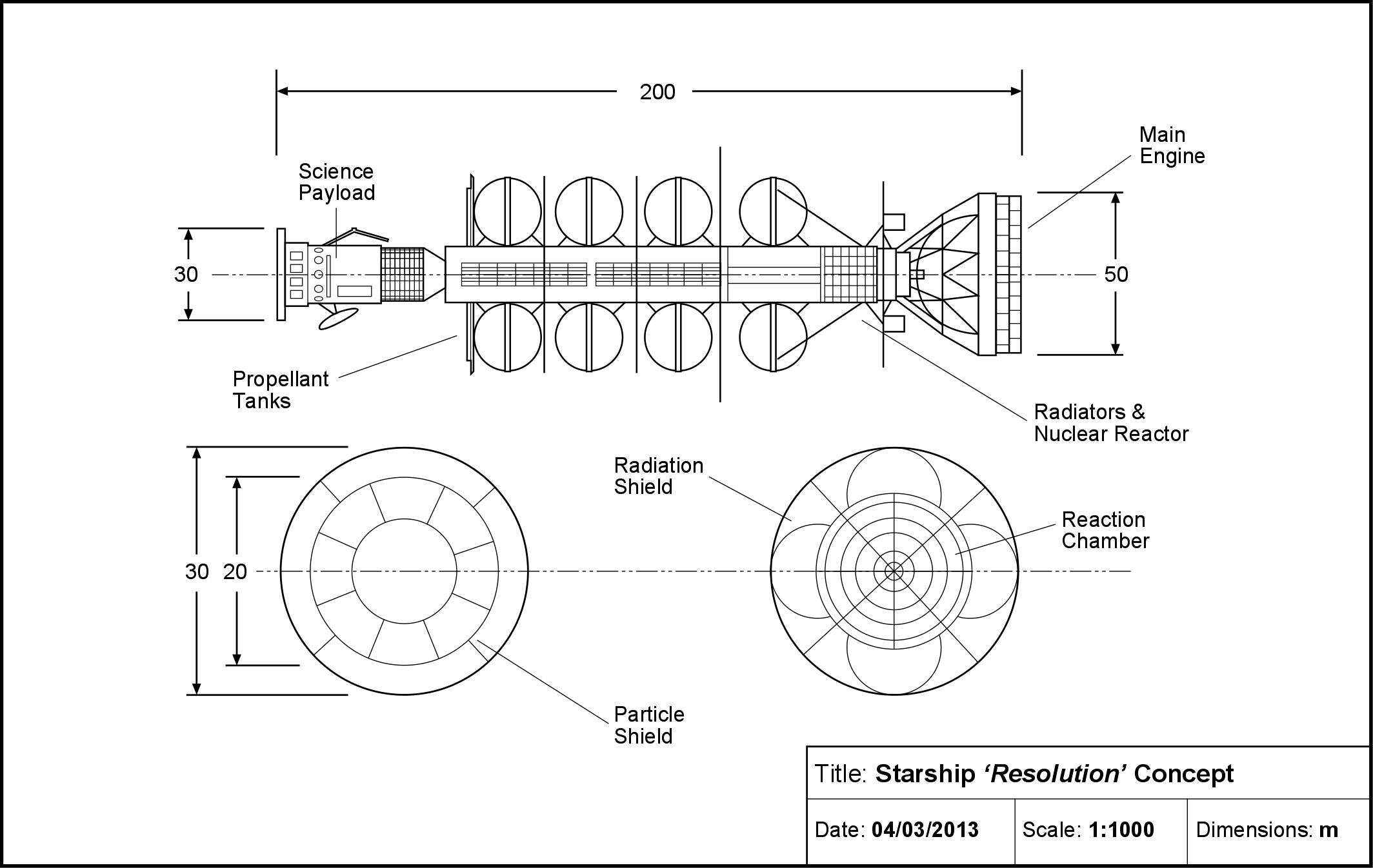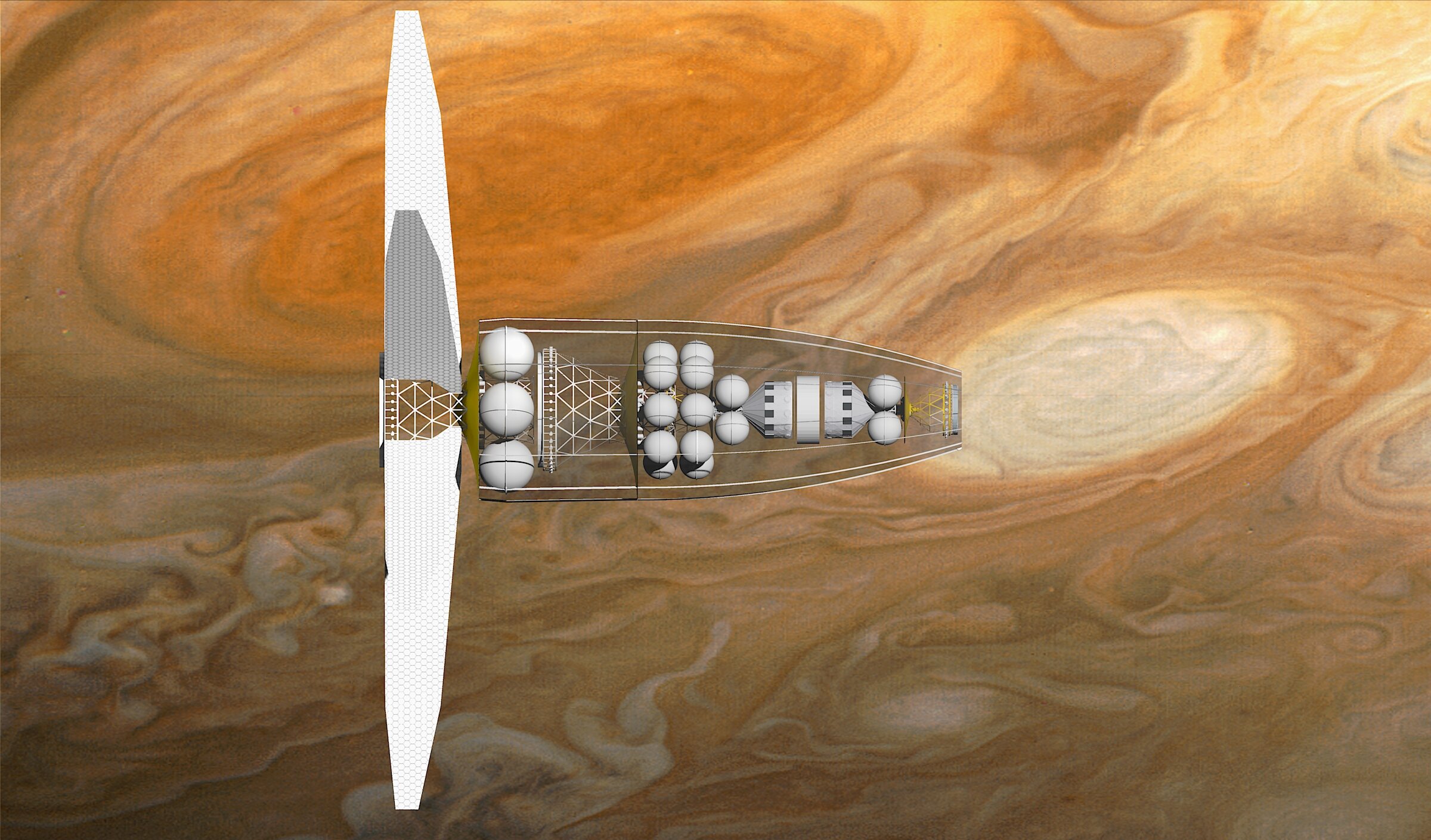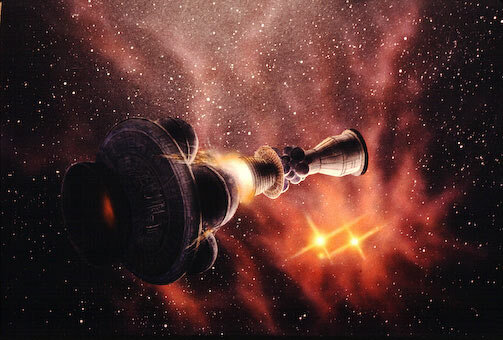The Sun is a giant fusion reactor, generating energy through the ignition of hydrogen fuels at the centre of its core, the radiation from which then takes around 50,000 years to travel through the opaque atmosphere to reach the outer envelope of the photosphere. Whilst a nuclear fission reactor will create lots of nasty radiation products which then have to be stored for tens of thousands of years, a nuclear fusion reactor on Earth would not have the same problems and is relatively clean whilst also offering the potential to produce reliable energy on the Earth for the national grid. If we can make it work in an Earth-based laboratory then this also brings the possibility of applying that same technology to a spacecraft propulsion system.
The key requirement to obtaining ignition in an inertial fusion capsule is through spherical convergence of a spherical fuel by hydrodynamic implosion to a state of what is called the fusion triple product. This species that the product of the confinement time, particle number density and the plasma temperature has to be greater than a certain number. When this occurs, then the fuel will ignite and generate a self-sustaining reaction and the goal is to produce more energy out of the capsule than went into creating it, so called energy gain. This criteria is also known as the Lawson criteria, named after John Lawson who first derived it in 1955 and then published it in a public document titled “Some Criteria for a Power Producing Thermonuclear Reactor” (Proceedings of the Physical Society, Section B, 70, 1, pp.6 - 10, 1955).
Conventional direct drive method of ‘hot spot’ ignition inertial confinement fusion
In conventional inertial confinement fusion, this state is achieved by impinging multiple laser beams onto the surface of the capsule, what is known as an ablator shell. These lasers will then mass ablate the surface causing a rocket effect and the transfer of momentum so that the spherical system starts to move inwards. The mass ablation also leads to a full ionization of the surface and so the creation of a corona layer of ions and free electrons; a plasma state. The goal is to compress the capsule up spherically and with high symmetry, until a high compression state is achieved at the centre and where the so called ‘hot spot’ ignition occurs under direct drive. The problem with this approach is that some of the electrons generated at the surface may be energised by the laser electromagnetic wave, and so accelerated up to suprathermal energies. This means that they will depart from a Maxwellian distribution and travel inwards into the fuel, ahead of the full compression. As they enter the fuel, they deposit their energy there and heat it up, so that it wants to expand, and this is an inefficiency on the implosion.
To help to mitigate some of these issues, at the National Ignition Facility (NIF) in San Francisco the team uses a ‘Hohlraum’ or radiation cavity, so that the implosion occurs via an indirect drive. That is, the lasers (192 in total) do not direct impinge on the capsule surface, but instead impinge onto the surface of a gold cavity that surrounds the capsule, and this then generates an x-ray heat bath which surrounds the capsule to ensure uniform symmetry.
Indirect drive ‘hot spot’ method of inertial confinement fusion
There is however another way of achieving energy gain, which has received little attention in the literature but most importantly for space propulsion, holds the promise of high gain. And by high we are talking about an order of magnitude higher than can be achieved in ‘hot spot’ ignition. The method is known as ‘shock ignition’ and some of the first to propose it included R Betti et al in “Shock Ignition of Thermonuclear Fuel with High Areal Density” (Physical Review Letter, 98, 155001, 2007) and L. J. Perkins in his paper titled “Shock Ignition: A New Approach to High Gain Inertial Confinement Fusion on the Ignition Facility” (Physical Review Letters, 103, 045004, 2009).
In shock ignition the primary drive pulse is initially used to slowly compress the fuel to a high density and a pressure of several hundred Mbar due to spherical convergence amplification, but under the threshold required for ignition. The return shock wave then centrally reflects and begins to travel outwards, but before this happens a second ignition pulse is sent into the capsule and the ignitor shock eventually collides with the outgoing return shock from the first pulse, sending a collision shock back inwards and thereby heating the central hot spot to ignition conditions. So shock ignition depends upon the dynamics and interaction of three shock waves, the initial return shock, the ignitor shock and the collision shock. This is a simple scheme and it does not require the use of any short pulse lasers; in the way that an alternative method called fast ignition would need for example. This then helps to minimise the laser-plasma instabilities.
One of the neat things about shock ignition is that the capsules have an unusually large ablator shell. This means that any suprathermal electrons generated in the corona will deposit their energy into that ablator shell and they will not make it into the fuel which would otherwise cause expansion. The result of this is that the energy deposition into the ablator shell therefore contributes towards the implosion, resulting in an amplification of the pressure pulse - and this is why a much higher gain is possible in principle.
For a normal NIF type hot spot ignition design capsule, the irradiation of the surface will also lead to Rayleigh-Taylor instabilities and will increase proportional to the capsule In Flight Aspect Ratio (IFAR) which is a measure of the average shell radius to its thickness (~2 for shock ignition, c.f 5 for conventional thin walled designs used in other methods). But for shock ignition, the IFAR is maintained low due to keeping on a low adiabat associated with the low implosion velocity promoting stability during the acceleration phase, this means that the RT instabilities for shock ignition are much reduced compared to conventional ICF.
Like many of the inertial confinement fusion capsule designs, they are untested to the point of ignition and gain. But it gives hope for the future that we have so many different types of designs to experiment with, to ensure we get the performance that we need for either an Earth-based reactor or a space based propulsion system. It is likely, that shock ignition designs will have a key role to play as we seek to optimise performance and mitigate losses whilst we are attempting to create a star in a reaction chamber on Earth or in space.














